As Ramadan approaches, there is much shopping going on along the streets near Khan el-Khalili. As we were leaving the Khan a few days ago on the Al-Azhar Bridge, we noticed the large crowd below us near the old Tiring Building in the Al Mosky area of Cairo.
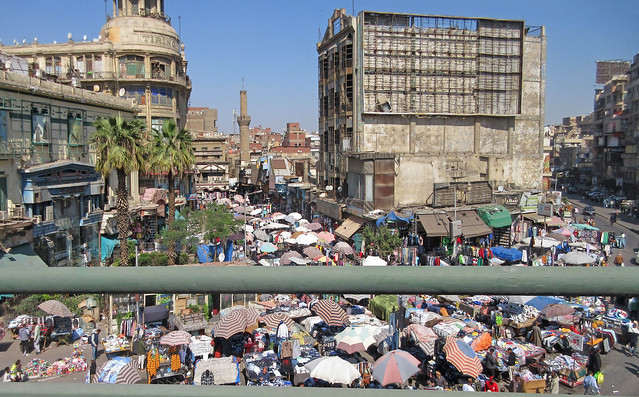
We returned to the general area to take a half-mile walk along Al-Azhar Street and Port Said Street before turning back into the Khan at the Church of the Blessed Virgin Mary St. George.
We started off near our usual entrance to the Khan, across Azhar Street from the Al-Azhar mosque. This mosque and associated university are the seat of Islamic authority and wisdom in much of the Islamic world.

We walked along this shopping path for a hundred yards or so before turning back out onto Azhar St. Believe it or not, a number of men were riding motorcycles and motor scooters down this narrow path through the crowd. If a motor cycle can fit, you will see one or feel one zip past you. Pay attention when you hear a horn! They don't want to stop.
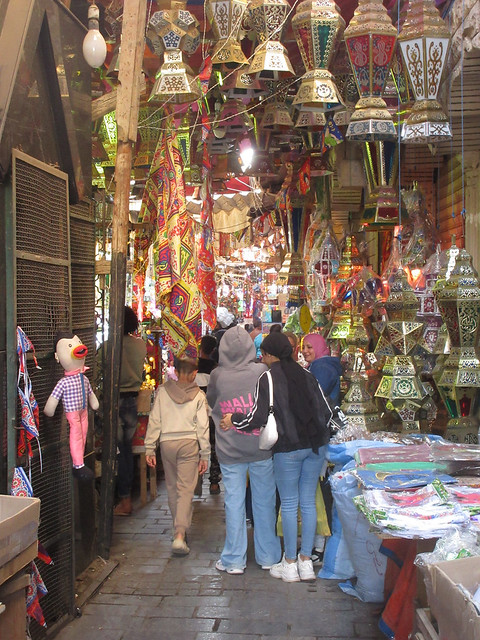
I don't recall seeing this fishing shop on previous trips; perhaps we were on a route that was new to us.
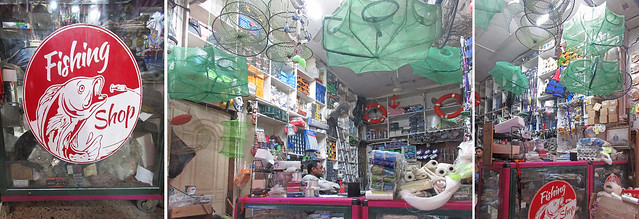
There was considerable merchandise targeted at the local Ramadan shopper. These saving banks, converted from various tins, were in abundance.

These special red and green figures seem popular among sellers, if not buyers. The rotund figure represents a television character popular with children during Ramadan broadcast on MBC (Middle-east Broadcasting Corporation in Saudi Arabia).
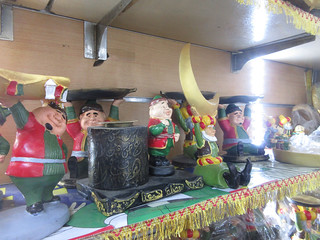

Moving back out onto Azhar Street, we found ourselves opposite the entrance to a street leading to the Avenue of the Tentmakers, a favorite route of ours.
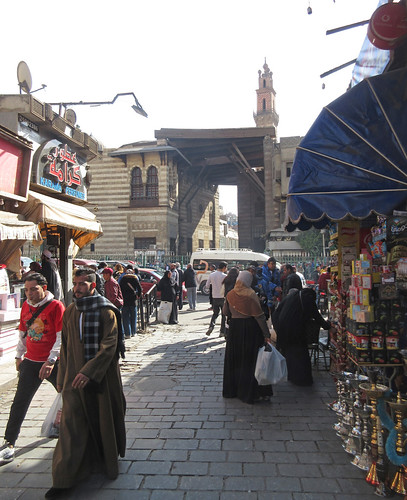
The street is crowded with shoppers and cars. Walking is probably faster than riding in a car or taxi at this point.
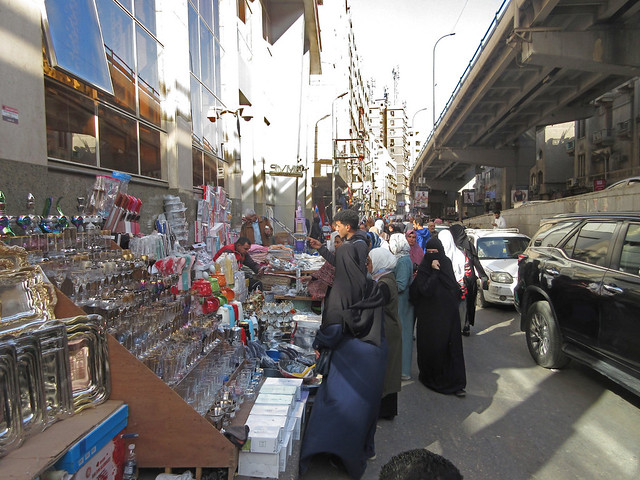
This street vendor was selling vine leaves for making stuffed grape leaves. His cart forced pedestrians into a narrow squeeze with the passing traffic.
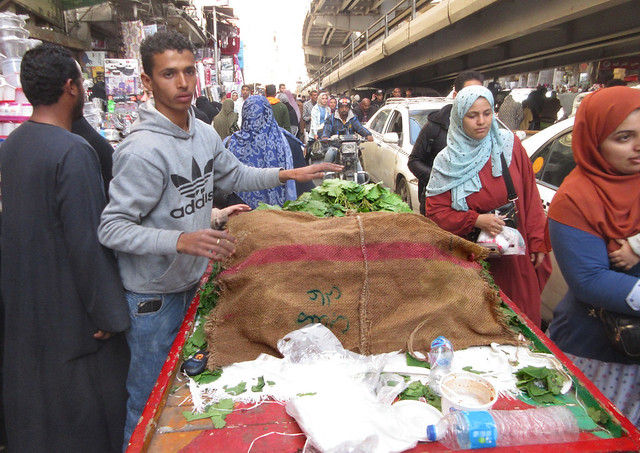
Linda is at a disadvantage in this crowd since she cannot balance a bag on her head which frees up the hands to carry a cellphone in one and push forward with the other.
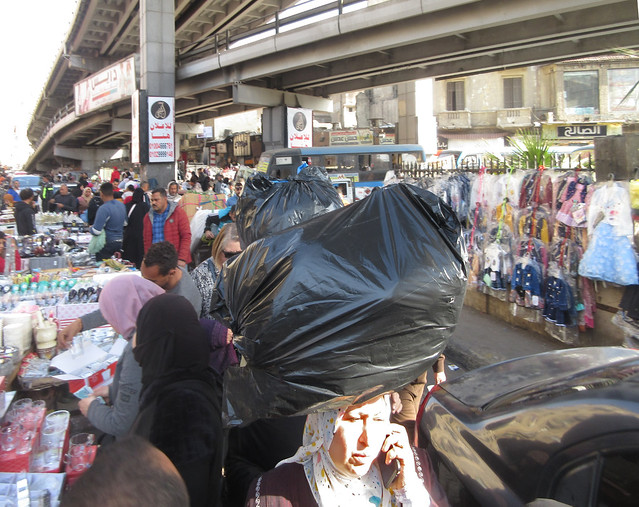
When we reached Port Said Street, we turned right before getting to the real crowd. Port Said is always a busy avenue. We soon came upon several clothing stores on the opposite side.

This store obviously had not sold out of Valentine Day night-wear yet.
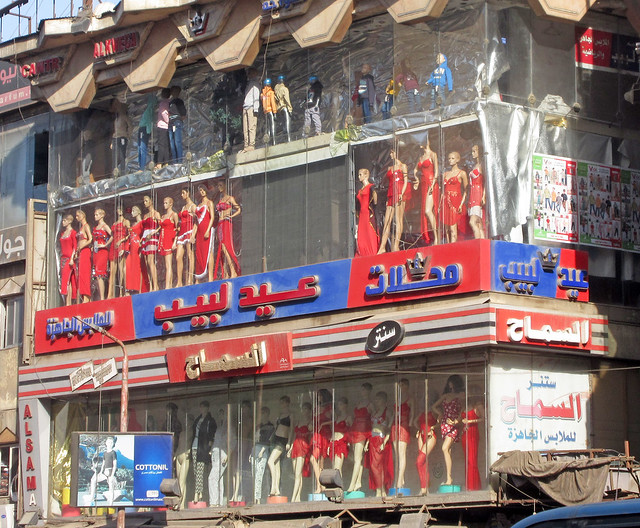
There is a convenient pedestrian overpass available to cross Port Said, although most people were using the "dodge and weave" method to cross through the slow moving traffic and vendors were using the overpass to display their wares. I climbed the overpass to get a few pictures up and down the street. Linda remained on the street level where she took a seat at one of the merchant's tables.
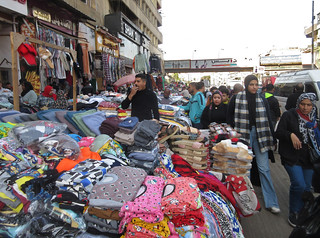
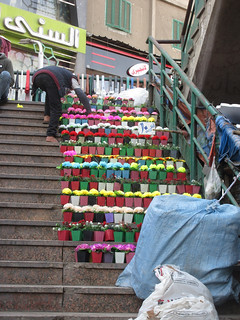
A large building near the overpass turned out to be a Franciscan Monastery which houses a large collection of very old Christian and Islamic texts, (three minute video tour here.)

After crossing Port Said, we found ourselves in the area of a large Christian Church. We saved the interior tour for another day but found the mosaics on the outside to be interesting.
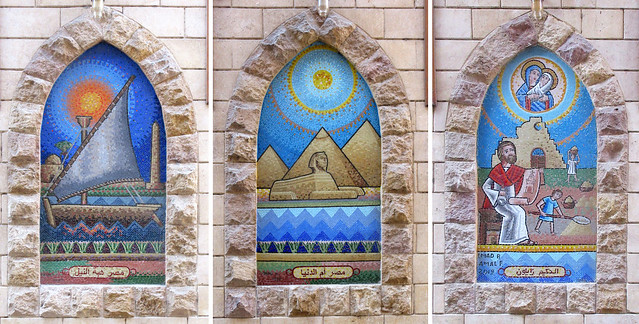
A map, found on the outside wall of the church, outlines the journey of the Holy Family through Egypt as recorded by the Coptic Christian Church.

We took about a half hour to wander through the labyrinth of streets in the area leading back to Khan el-Khalili, eventually reaching the gold-trading area adjacent to el-Moez Street. This dead-end alley beyond the Smile sign is lined with gold shops featuring the precious metal under bright lights.

We reached el-Moez Street at about dinner time and decided we would try one of the new rooftop restaurants along the street; we chose Khan Shaheen, largely because of the welcoming Santa Claus with saxophone at the entrance.
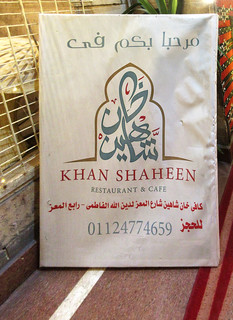

Climbing the stairway to the top floor, we noticed the Happy New Year sign, too.
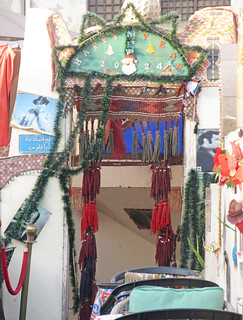
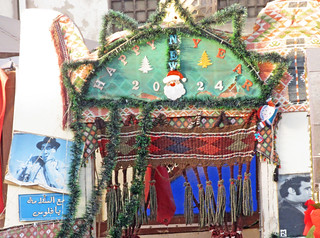
The Khan Shaheen menu offered both a chicken shawarma crepe and a chicken shawarma sandwich. We ordered one of each. The crepes are a new item on menus here, we've been told, and have become popular as various Syrian restaurants have introduced them.

Sandwich on the left and crepe on the right.
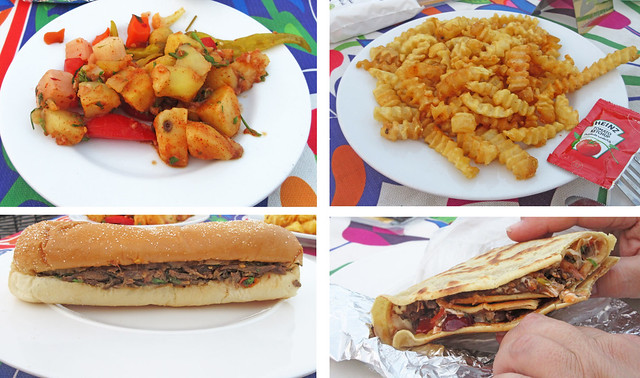
Dessert items on the menu include "Ali's mother" and "molten cake." The former is usually referred to as "Um Ali" (mother of Ali) and is quite delicious. Molten cake? We have no idea. As for the meaning of this phrase at the bottom of the menu - we thought it didn't make sense because it is a poor translation of the Arabic, but native speakers cannot figure out the Arabic version either.
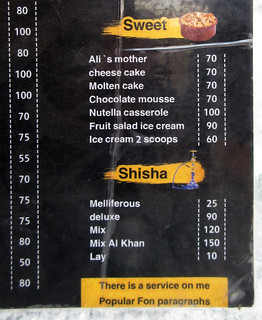
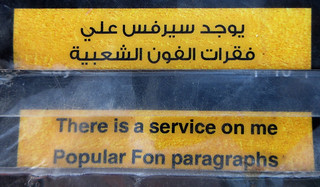
We were the only guests on the top floor in the early evening hour, where this electrician appeared very steady as he walked on the fourth-story wall above the street, adjusting the lighting.
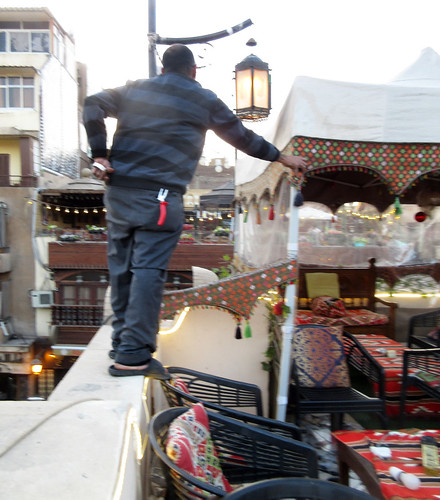
As we looked around, we noticed two other rooftop dining spots nearby. These are all new to this end of Moez Street along with many new shops. I'll save the Moez street tour for another post.
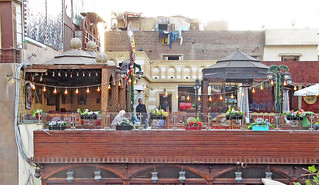
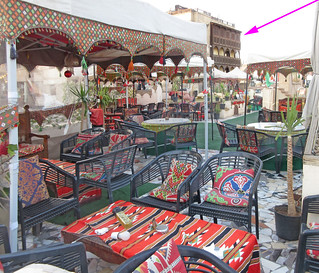
We left the restaurant a bit after dark and many lights were now on, giving the area a magical quality.
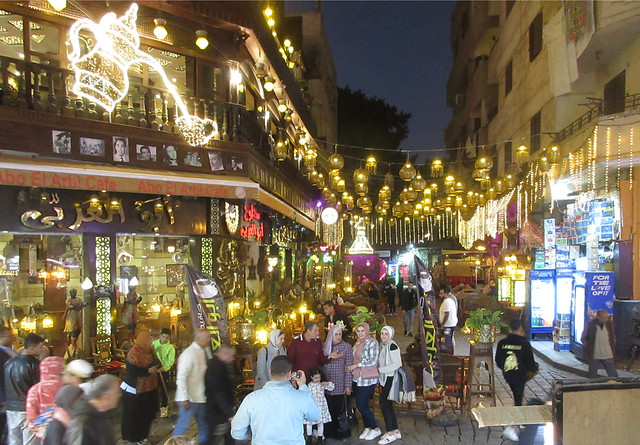
We exited Moez Street by the Bab El Fotouh gate in the north wall near the notable Al Hakim Mosque.
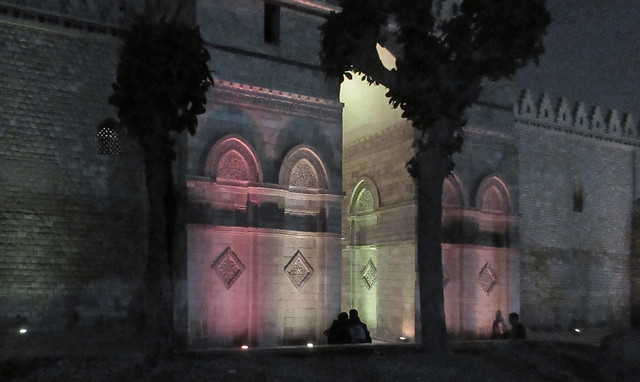
Hailing a taxi, we replaced two passengers just arriving at the gate and joined two others already in route to their destination along the Nile Corniche. Passing through Tahrir square, we caught a glimpse of the Nile Ritz-Carlton (formerly the Nile Hilton) and the former Mogamma building, both bathed in bright lights. Cairo proves to be an enchanting city of lights after dark.
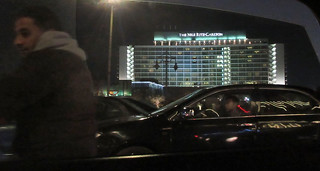
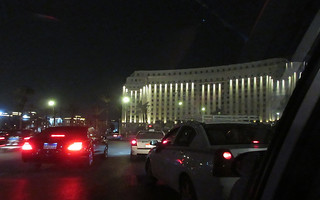
More pictures at this Flickr album.

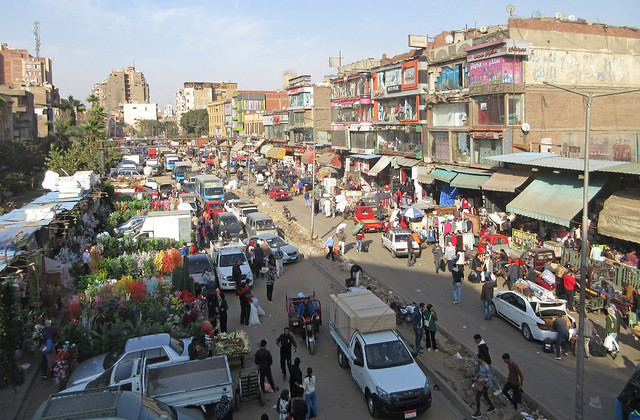
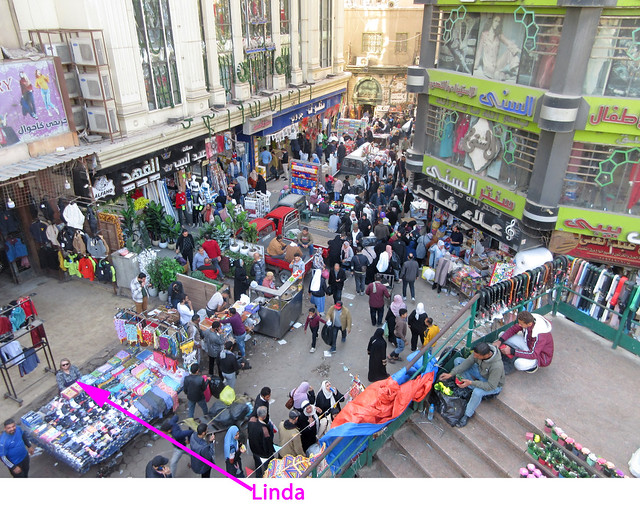





No comments:
Post a Comment